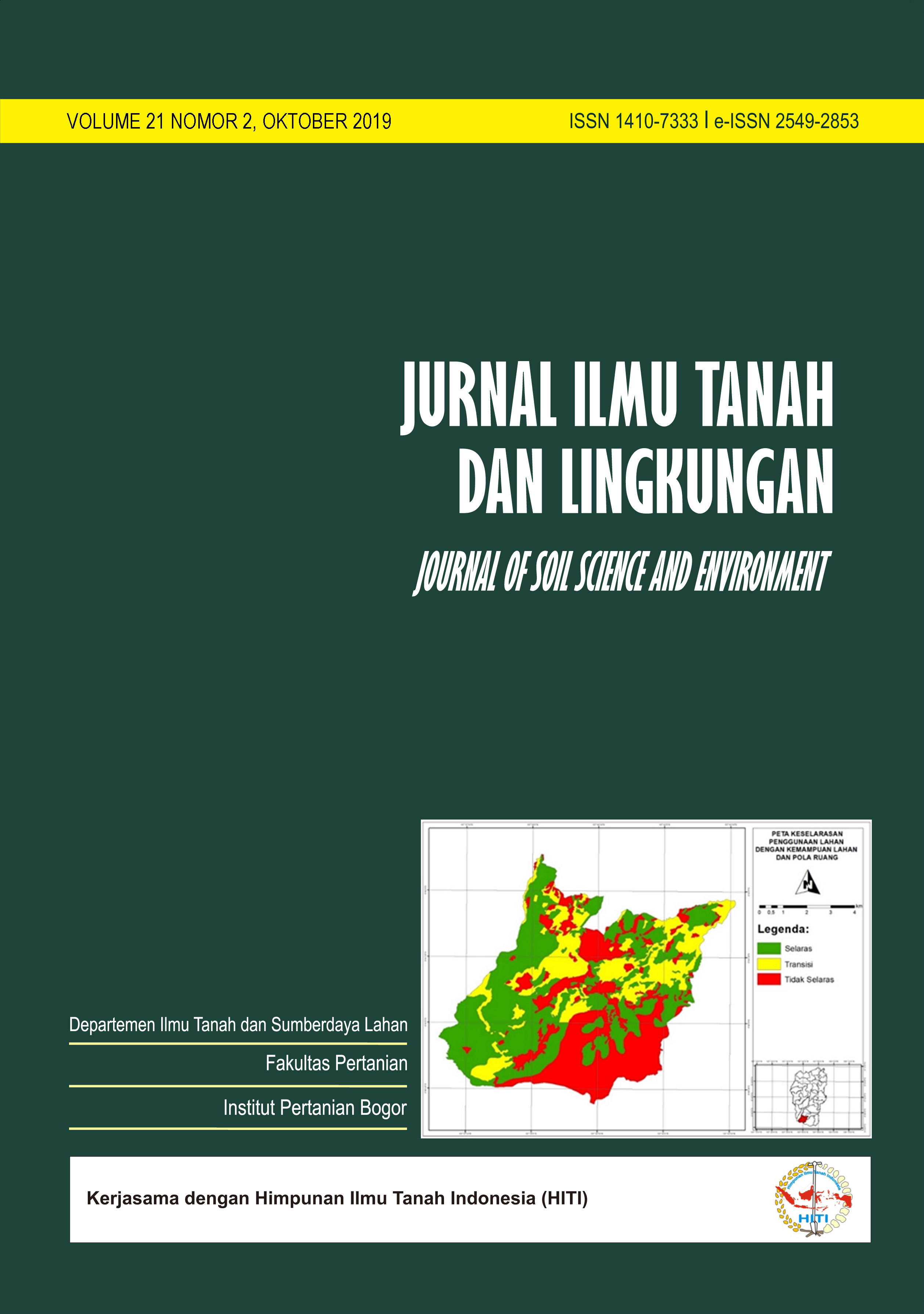Simulation of Land Use Change Against on Hidrological Characteristics of the Ciliman Watershed
Simulasi Perubahan Penggunaan Lahan Terhadap Karakteristik Hidrologi Daerah Aliran Sungai Ciliman
Abstract
The Ciliman Watershed is one of the watersheds in Kabupeten Lebak and Kabupaten Pandeglang with a total area ± 500 km2. According to report of Badan Nasional Penanggulangan Bencana (BNPB) Serang City, flooding often occurs in the Ciliman watershed because of the overflow of the Ciliman tributaries, this occurs because of the conversion of land use in the upstream area of Ciliman watershed so that during the rainy season, rainwater does not seep into the ground but directly into runoff. The aims of the research is to simulate several soil and water conservation as an effort to better manage the Ciliman watershed and determine the best land use scenario in accordance with the biophysical Ciliman watershed. This study applied SWAT model as a tool to simulate several soil and water conservation technical at Ciliman watershed. The scenarios simulated were: 0) existing condition, 1) application of forest area functions, 2) application of soil and water conservation techniques using RTK RHL, 3) application of regional spatial planning (RTRW). The results showed that scenario 2 (RTK RHL) was the best scenario by overall. Scenario 2 can reduce the Qmax/Q min ratio by 31.63% compared to other scenarios. And also can reduce coefficient of runoff by 24% and direct runoff by 23.55% and increase baseflow by 16.20% and water yield by 1.77%.
Downloads
References
Asdak, C. (2010). Hidologi dan Pengelolaan Daerah Aliran Sungai. Gadjah Mada University Press. Yogyakarta.
[BPS] Badan Pusat Statistik Kabupaten Pandeglang. 2015a. Lebak Dalam Angka. BPS Kabupaten Pandeglang. Banten
[BPS] Badan Pusat Statistik Kabupaten Pandeglang. 2015b. Pandeglang Dalam Angka: BPS Kabupaten Pandeglang. Banten
[Dinas PUPR] Dinas Pekerjaan Umum dan Perumahan Rakyat. 2015. Kajian Evaluasi Kinerja Penyelesaian Pengendalian Banjir DAS Ciliman. Laporan Akhir. Banten
[Dirjen RLPS] Direktorat Jenderal Rehabilitasi Lahan dan Perhutanan Sosial. 2014. Peraturan Direktur Jenderal Rehabilitasi Lahan dan Perhutanan Sosial Nomor: P. 61 /Menhut-II/2014 tentang Pedoman Monitoring dan Evaluasi Daerah Aliran Sungai. Jakarta.
Junaidy, E. 2013. Peranan penerapan agroforestry terhadap hasil air daerah aliran sungai (DAS) Cisadane. Jurnal Penelitian Agroforestry, 1(1):41-53
[Kemenhut] Kementrian Lingkungan Hidup dan Kehutanan. 2014. Peraturan Rehabilitasi Lahan dan Perhutanan Sosial Nomor: P.61/Menhut-II/2014 tentang Pedoman Monitoring dan Evaluasi Daerah Aliran Sungai. Ditjen RLPS-Dephut. Jakarta.
Moriasi, D.N., J.G. Arnold, M.W. Van Liew, R.L. Bingner, R.D. Harmel and T.L. Veith. 2007. Model evaluation guidelines for systematic quantification of accuracy in watershed simulation. American Society of Agricultural and Biological Engineers, 50(3): 885-900.
[Pemprov Banten] Pemerintah Provinsi Banten. 2011. Peraturan Daerah No. 2 tentang Rencana Tata Ruang Wilayah Provinsi Banten Tahun 2010-2030. Pemerintah Provinsi Banten. Banten
Department of Soil Science and Land Resources Departemen Ilmu Tanah dan Sumberdaya Lahan, Faculty of Agriculture Fakultas Pertanian, IPB University



















